 | Charles Davies - Algebra - 1861 - 322 pages
...this result from the last remainder, and divide the first term of the result so obtained by double the first term of the root, and the quotient will be the fourth term. T!-tn proceed in a similar manner to find the other terms. EXAMPLES. 1. Extract the square... | |
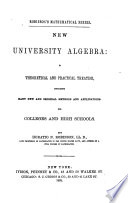 | Horatio Nelson Robinson - Algebra - 1863 - 432 pages
...Thus, Va' = a. 2d. The second term of the root may be found by dividing the second term of the power by three times the square of the first term of the root. Thus, За'6-ьЗа* = 6. 3d. The last three terms of the power may be factored, and written as follows... | |
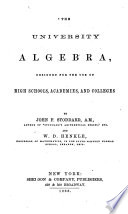 | John Fair Stoddard, William Downs Henkle - Algebra - 1866 - 546 pages
...third term of the root; hence, we shall obtain the third term of the root by dividing the first tenn of this remainder by three times the square of the first term of the root. Continuing thus, we shall obtain all the terms of the root. This process is exactly that given in the... | |
 | Horatio Nelson Robinson - Algebra - 1866 - 328 pages
...power ; and to find the second term of the root, we must divide the second term of the power, 3a26, by three times the square of the first term of the root, 3a2 ; thus, 3а26 -=- 3а2 = 6. The last three terms of the power may be factored ая follows : (3as... | |
 | Joseph Ray - Algebra - 1852 - 422 pages
...this will give the first term of the root, and sul>tract its cube from the given polynomial. 2nd. Tale three times the square of the first term of the root, and call it a trial divisor for finding each of the remaining terms of the root. Find how often the trial... | |
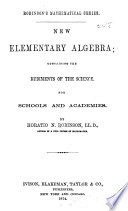 | Horatio Nelson Robinson - Algebra - 1874 - 340 pages
...power ; and to find the second term of the root, we must divide the second term of the power, 3a26, by three times the square of the first term of the root, Зa2 ; thus, За26 -=- Зa2 = b. The last three terms of the power may be factored as follows : (Зa2... | |
 | Horatio Nelson Robinson - Algebra - 1875 - 430 pages
...power. Thus, 2d. The second term of the root may be found by dividing the second term of the power by three times the square of the first term of the root. Thus, 3a25 -f- 3a2 = b. 3d. The last three terms of the power may be factored, and written as follows... | |
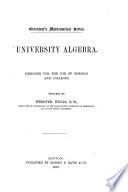 | Webster Wells - Algebra - 1879 - 468 pages
...b + 3 a b2 + b3 or (3 a3 + 3ab + b2) b. Dividing the first term of the remainder by 3 a2, that is, by three times the square of the first term of the root, we obtain b, the other term of the root. Adding to the trial divisor 3 ab, that is, three times the... | |
 | James Bates Thomson - Algebra - 1884 - 334 pages
...term of the root, and subtract its cube from the given polynomial. II. Divide the first term of the remainder by three times the square of the first term of the root as a trial divisor, and the quotient will be the next term of the root. III. Complete the divisor by... | |
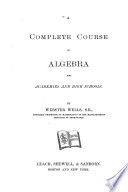 | Webster Wells - Algebra - 1885 - 370 pages
...8а^ from the given expression, we have — 36x4y as the first term of the remainder. Dividing this by three times the square of the first term of the root, 12 x4, we obtain — 3y as the second term of the root. Adding to the trial-divisor three times the... | |
| |